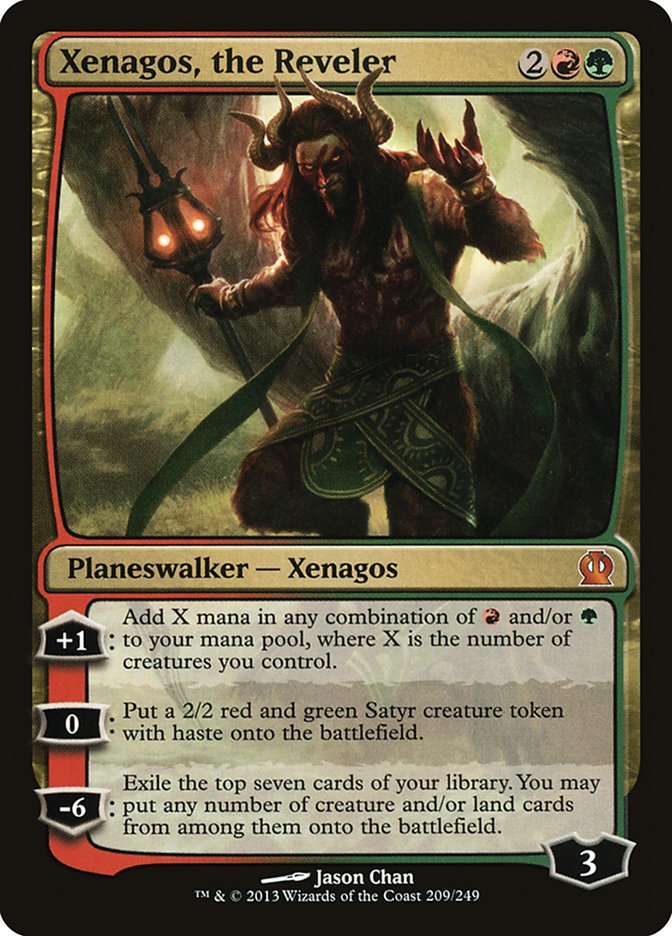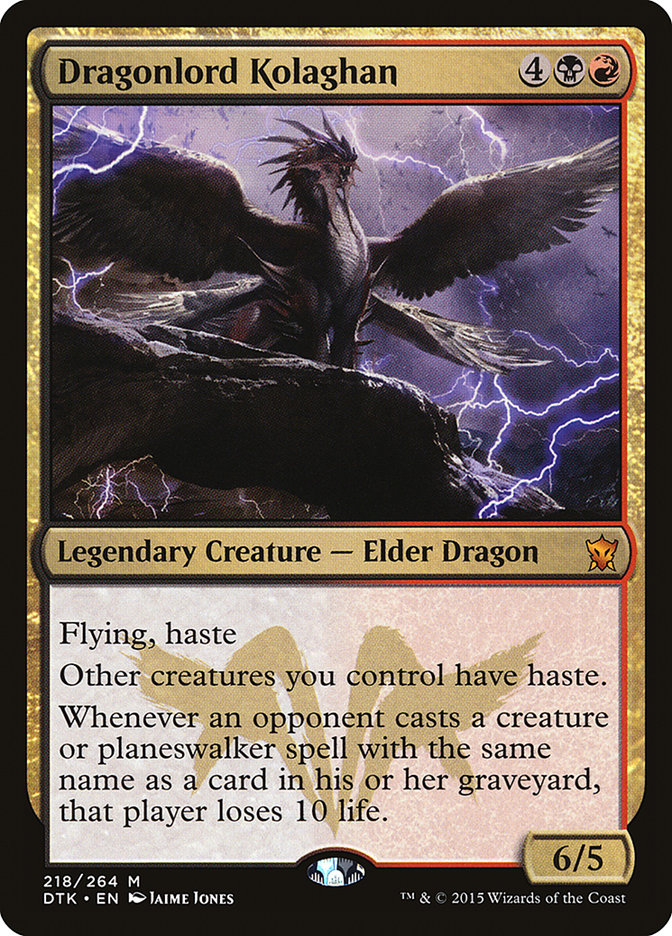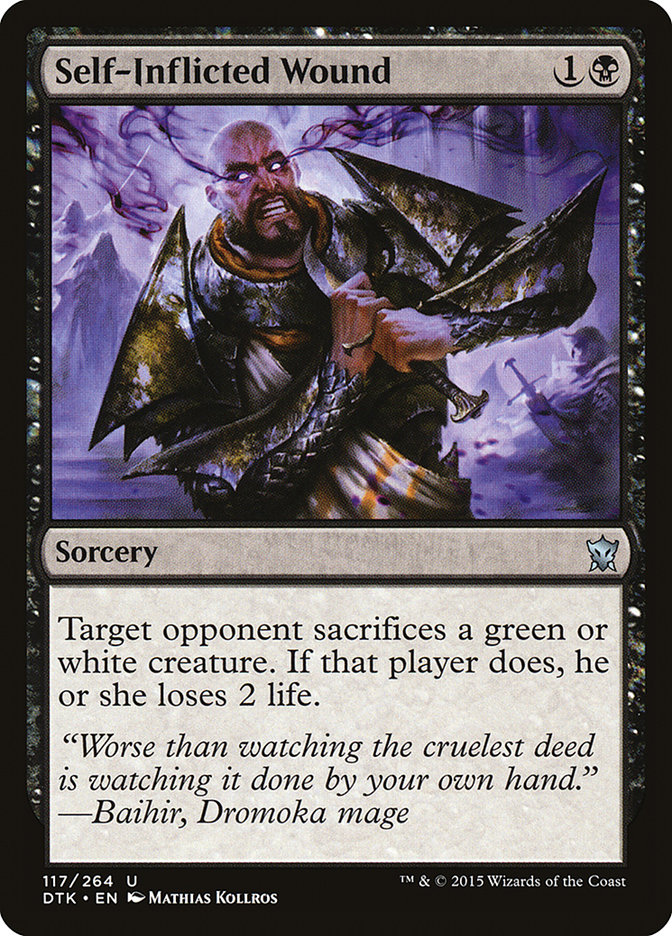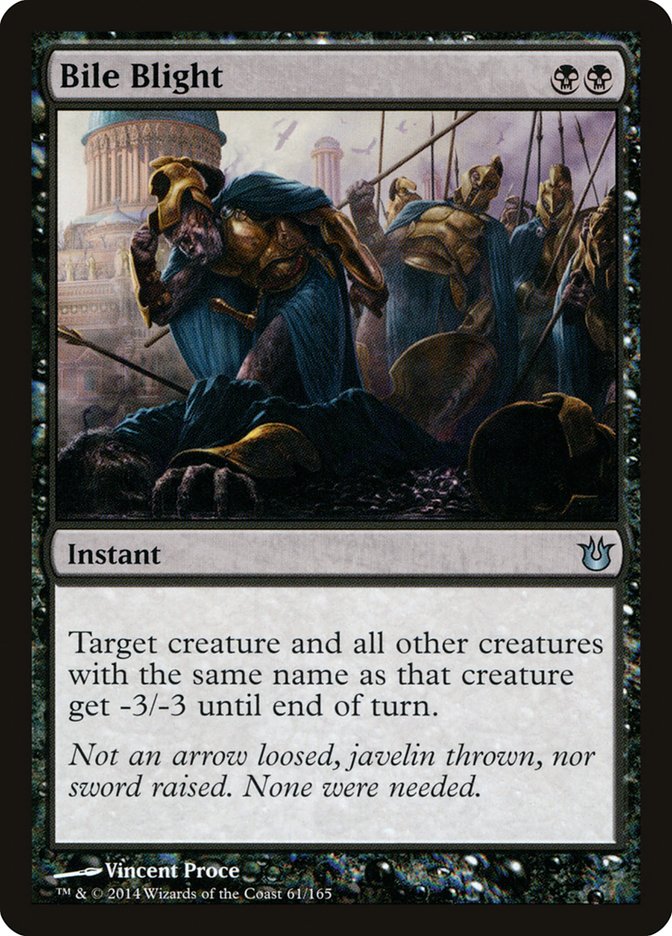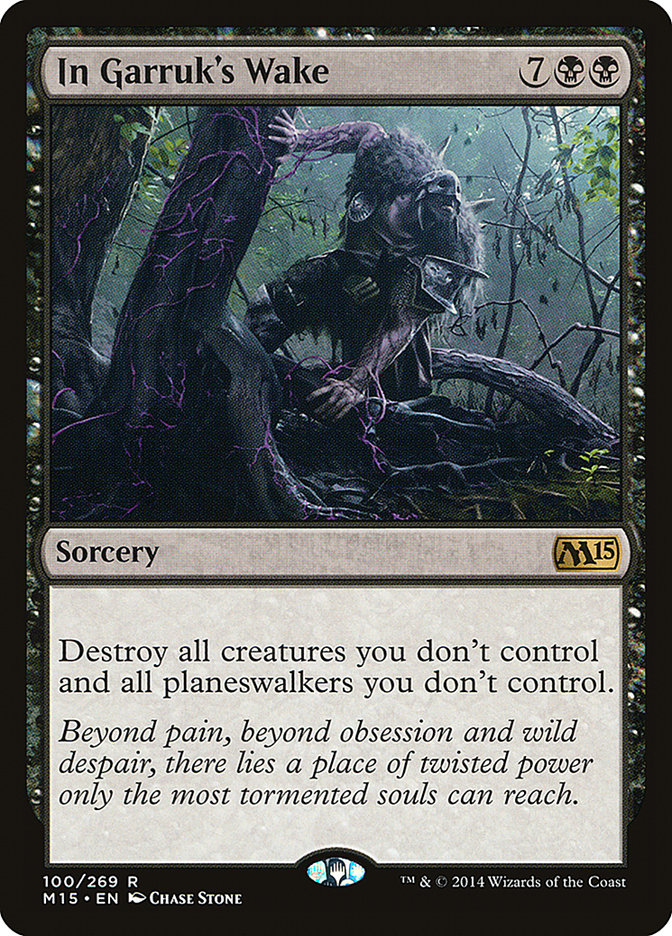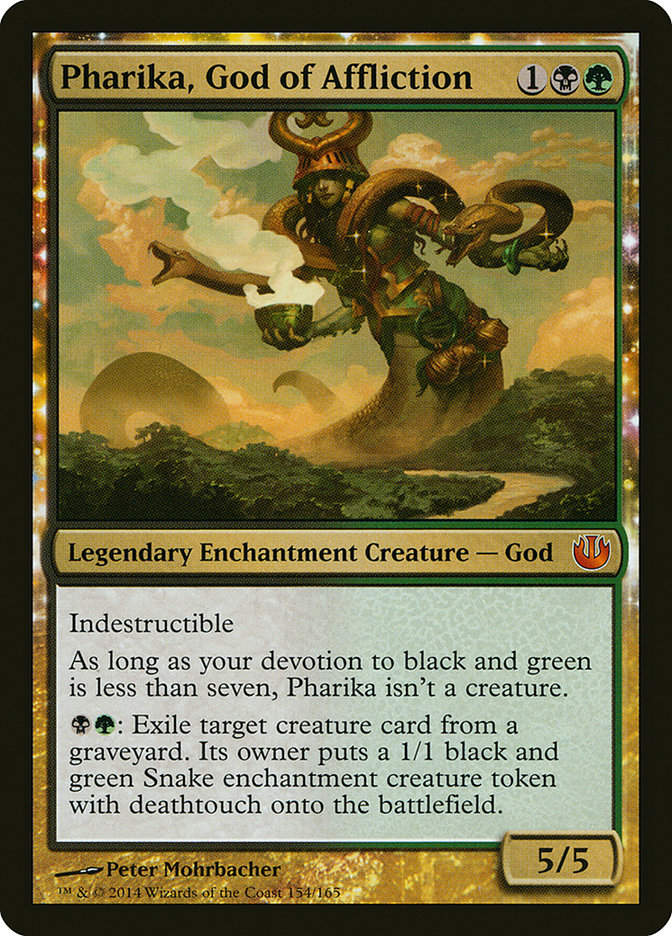This past weekend I headed down south to the wonderful city of Richmond, Virginia to cast some spells. Some of my readers may remember, however, that I was
unable to play in the Season One Invitational due to work commitments and instead choose to play in the Standard Open on Saturday. I was excited about the
opportunity to take a break from playing Sultai Control to see if I could win with another clan. Unfortunately, that still remains to be seen as I only put
up a mediocre finish in the Standard Open with my take on Esper Control. I managed to make it to the second day of competition, but after picking up an
early loss, which knocked me out of top 8 contention, I decided to drop to play in the Modern Premier IQ instead. For reference, here is the Esper deck I
ended up playing;
Creatures (3)
Planeswalkers (8)
Lands (26)
Spells (23)

Going into the tournament I felt that the list was solid and that it had some nice synergies, as well as a solid gameplan against the field. Just like my
previous Sultai Control list, this version of Esper was able to dodge the Murderous Cuts, Bile Blights, and other removal spells your opponents might have
in their maindeck. I think my mediocre performance in the tournament can be attributed to unfamiliarity with the deck, a few costly decisions, as well as
potentially not having the best version of the deck. Both James Buckingham and Shaheen Soorani did very well with their Dragon-centric take on Esper. For
reference, here is James Buckingham’s list that he piloted to a 7-1 record in the Invitational;
Creatures (4)
Planeswalkers (2)
Lands (26)
Spells (28)

James’ maindeck seems much better suited for the current metagame, largely due to the amount of counterspells he chose to play. There are a lot of cards in
the current Standard environment that have an immediate impact on the board when they enter the battlefield or remain in play for a turn. Removal spells
aren’t as effective at dealing with these types of threats, and instead the best solution is to prevent them from ever entering the battlefield at all.
Powerful spells like Siege Rhino, Whisperwood Elemental, Thunderbreak Regent, and Planeswalkers make counterspells very effective and useful tools for the
control deck. James uses a total of nine maindeck counterspells, which I think is a great number. I would even consider adding a second copy of Ojutai’s
Command since that card really impressed me over the course of the weekend.
Even though playing Esper Control did not work out for me, I still maintain the assertion from my last article that Esper and Sultai are powerful control
decks in the current Standard format. Currently, it seems that Sultai Reanimator is the best version of Sultai right now. On the drive home from Grand Prix
Cleveland, Reid Duke and I worked on Sultai Reanimator and were pretty easily able to fit many of the Dragons of Tarkir cards into the existing shell.
Before Richmond I swayed back and forth, unsure which direction I was leaning toward and unsure which deck I wanted to play. In the end I think that Reid
made the correct decision for the weekend, while I did not. It’s easy to regret a deck choice when the weekend doesn’t go your way, but even ignoring my
result I think that the version of Esper I chose was just not up to the task. There are currently three approaches to the Standard format right now; super
aggressive, super controlling (which must include counterspells), and engine-based (such as Satyr Wayfinder/Whip of Erebos/Courser of Kruphix/Sidisi, Brood
Tyrant). I don’t think that the version of Esper I ended up on fit into any of these three major roles, and as a result, I did not do as well as I would
have hoped in the tournament.
The Open Series in Syracuse is just a day away, which means that the Pro Tour is just a week away, and I am lost and confused. I’m not sure if I will be
able to make it to the Pro Tour due to work commitments, and I don’t know what I am playing this weekend for the Open Series. I’m not sure why I ever
turned my back on Sultai, and I am sorry for that! I will most likely go back to the clan that has treated me so well over the past few months,
which narrows my decisions down to Sultai Control and Sultai Reanimator. The Reanimator version of the deck has proven itself to be a powerful option, but
brewing a new Sultai Control list is more my style.
How can you not play Dig Through Time and Treasure Cruise? They are banned in formats for a reason!
For those of you that are not as committed as I am to a specific clan, I have what I think might be a great hidden deck in the format. Here’s a deck that I
have been testing and is on my list of possible decks that I could play tomorrow, or even potentially at the Pro Tour next week if I end up going;
Creatures (17)
- 4 Sylvan Caryatid
- 4 Courser of Kruphix
- 3 Satyr Wayfinder
- 2 Tasigur, the Golden Fang
- 2 Sidisi, Undead Vizier
- 2 Dragonlord Kolaghan
Planeswalkers (5)
Lands (23)
Spells (15)

I think this deck has a lot of going for it, and it would fall in under the Satyr Wayfinder/Courser of Kruphix engine, which provides a great source of
card advantage and makes sure you hit your land drops so you are able to play all your big threats. The deck has tons of removal to fight the aggressive
strategies as well as the specific threats of other decks. As always, Hero’s Downfall functions as an answer for aggressive creatures while also answering
the Planeswalkers of other control and midrange decks. This deck is also full of small synergies that mimic the engines of other decks. Xenagos makes
countless tokens that can later be combined with Sidisi, Undead Vizier to search for whichever card we need in a specific situation. Satyr Wayfinder also
does double and even triple duty in this deck, as it is able to help us hit our land drops in the earlygame, provides a body to sacrifice later, and leaves
cards in the graveyard to fuel the delve cost of Tasigur. In addition to all of those benefits, it also puts creatures in our graveyard that we can later
return through one of the modes on Kolaghan’s Command. I spoke in my last article about how good I thought all of the
Commands were, and Kolaghans’s Command is no exception. The card fills many different roles in the deck, including the option of being maindeck removal for
Whip of Erebos. Making an opponent discard a card may not seem like a powerful ability at first, but this is a mode that has been often used on Piracy
Charm and Funeral Charm historically. You won’t always want to make your opponent discard, but it’s the versatility and the range of this type of effect
that make it truly powerful, rather than the individual effects themselves.
Xenagos is an underplayed threat in the format that does a great impression of Garruk Relentless by pumping out 2/2s without any loyalty cost. Even better
than Garruk Relentless, these creatures have haste, which allow them to more quickly attack the opponent or their Planeswalkers. The deck also has a newer
copy of Garruk in Garruk, Apex Predator, as well as a copy of Ugin, the Spirit Dragon. These singletons serve as powerful effects that we can use to take
over the lategame, but we are only playing one copy of each because it’s not the type of card that we want to draw too many of. In addition, these cards
can easily be tutored for using the ability of Sidisi. Sidisi combined with the raw card advantage generated by Outpost Siege allows you to dig deep into
your deck to find the individual cards that you may need in a specific matchup. The ability to look for different effects is very powerful in the early
stages of a metagame when you’re unsure what decks you might face. Above all, Xenagos helps you cast these powerful high end spells since you can use the
+1 ability to have it provide you the additional mana.
I’m playing two copies of Dragonlord Kolaghan as a reasonably cheap win condition that can sometimes lock your opponent out of racing back. A six-power
flying creature with haste is a good deal by itself for six mana, but the ability on it can also be backbreaking. The decks that I play usually have fewer
copies of each threat and instead rely on variety, but this is not the case for many of the other decks in the format. If this card hits play on turn 5 off
Sylvan Caryatid, a lot of the aggressive decks are going to have trouble racing it since they are unable to play newer copies of their threats that we
already answered and left in their graveyard. Ten life is a lot, especially when this creature attacks for six the turn it enters the battlefield.
I think that this Jund deck has a lot of good matchups, but the toughest might be G/W Devotion. G/W Devotion was not heavily played this past weekend, but
it is still a deck that I would recommend expecting and preparing for in a given Standard tournament. G/W Devotion is able to flood the board and
invalidate our one-for-one removal spells rather easily. In addition, Deathmist Raptor is a recurring threat that can be a pain to play against. Our
maindeck Kolaghan’s Commands are able to answer artifact threats, but it can’t answer cards that are only enchantments like Mastery of the Unseen. However,
Dragonlord Kolaghan is one of the best maindeck cards in this matchup since it is able to fly over their blockers on the ground while also locking them out
of playing some of their creatures. Thoughtseize is also very important here since it is able to help make sure you are safe to play the Dragonlord.
The sideboard in this deck is very important since Outpost Siege and Sidisi allow you to see more cards in your deck in order to find the important
sideboard cards in games 2 and 3.
These function as a great new threat against control and other midrange decks.
This is good against any green or white deck, and it is especially good against Heroic.
These are great in the control and midrange matchups as cheap and efficient answers.
These are great against Courser of Kruphix and Whip of Erebos, but they are also good answers against Mastery of the Unseen out of G/W Devotion or Outpost
Siege.
These are mainly good against token decks, but they are cheap removal spells for other aggressive strategies as well.
Divination effects and card selection are always good against control and midrange.
There aren’t any mass removal effects in the maindeck besides Ugin, so this is a powerful effect that we can search or tutor for in the sideboard games.
This card also combos with Dragonlord Kolaghan in our maindeck.
This is another effect, much like Crux of Fate, that can be especially powerful in the lategame. With Xenagos you should be able to cast it fairly easily
in the matchups where it really shines.
Another powerful effect that is useful against Whip decks or other midrange decks.
I truly feel Jund can be the real deal and is on my top decks to play list. As of now, I am leaning towards Sultai, but I don’t have anything brewed up yet
for the weekend.
So what do you guys think? Should I play my new Jund deck this weekend in Syracuse, or should I go back to my roots and play a Sultai brew? Maybe just
Sultai Reanimator like Reid Duke played to a second place finish at the Season One Invitational? I’ve done this before, and the last time I managed to take
down the Standard Open in Washington DC thanks to you guys! So let’s try it again. This time voting will be quick since I am leaving for Syracuse in a
matter of hours. So the cut off will be around 4pm today!

